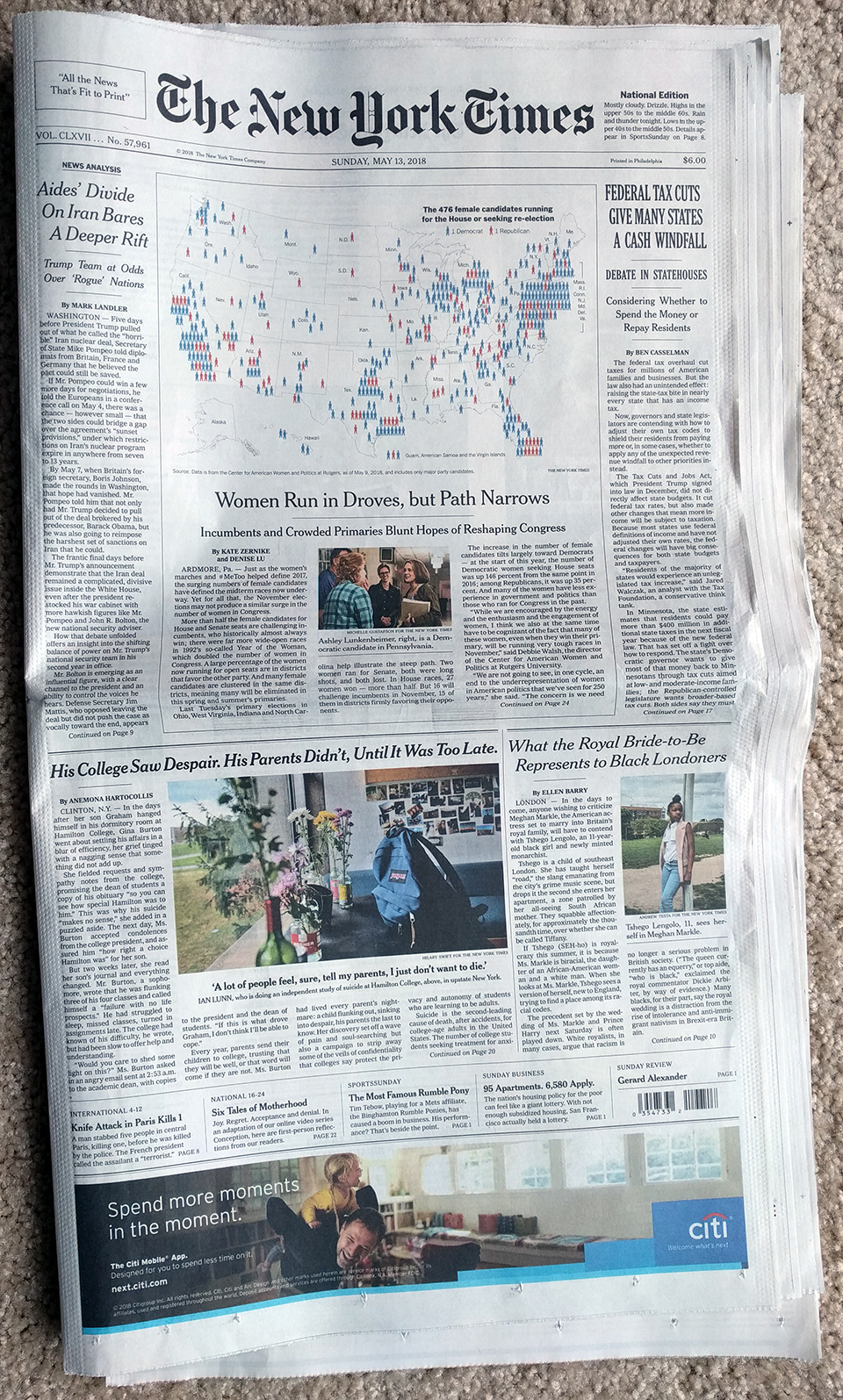If you haven’t heard by now, this year is a US Congressional midterm election year meaning that eligible American citizens will be voting for their local representative and 1/3 of the states will be selecting their senator. But perhaps because yesterday was Mother’s Day in the States, the New York Times ran a front-page, above-the-fold piece on the number of women running for Congress this year, either as incumbents or challengers.

Those of you familiar with this blog will know that I am excited basically anytime smart graphics work their way onto the front page. The map itself shows the rough location of where women candidates are running for office and a quick comparison shows there are more blue, Democratic, women than red, Republican. Nothing too special here.

But as I began to read the article, I became more interested in my questions that then fortunately became some of the article’s points about where these women were running in terms of competitive seats. Unfortunately the map does not contain any information about that.
Until I got to the inside page later on.

This graphic is the more impressive of the article’s two. As a brief inside, these types of graphics always intrigue me. What kind? The kind that do not fit neatly into a box. As part of my job, I serve as creative director, graphics designer, page designer, and production designer for the Philly Fed’s premier quarterly economics journal. Sometimes the job is having a box and filling said box with a graphic, the map on the front page is a great example. But with this graphic, that would leave too much white space at the top and so how do you design around or rather with that?
To the graphic specifically though, we get a nice little treat.

Nothing is complicated in this one. We have three conditions, running in an open seat or running against an incumbent, an incumbent, or running for an open seat. Since this piece focuses on the difficult path to get these women into office, especially because of the challenges of facing an incumbent, that group is the highlighted one. (A less focused piece that shows all three conditions would be neat.)
Then we basically have a graphic where we count the number of icons. In this case, we could have even used little boxes as the icons are not necessary. Personally, I would have opted for something like boxes, but these icons are not too distracting. The icons are then grouped by the competitiveness of the district, the part that interested me, and at this point note that the designer makes certain each grouping is an equal ten units wide.
Visually it becomes quite clear that women should certainly expect greater representation in Congress come 2019, but with so many women running as Democrats against safe Republican incumbents, it will be difficult to see many of these women in Congress. Of course with all this talk of a wave election, if that is true, you would expect some of the seats on the right to move to the left, i.e. safe Republican become lean Republican become tossups.
Overall, this was a nice treat for a Sunday read of the paper.
Credit for the piece goes to Kate Zernike and Denise Lu.

One thought on “Women Running for Congress”